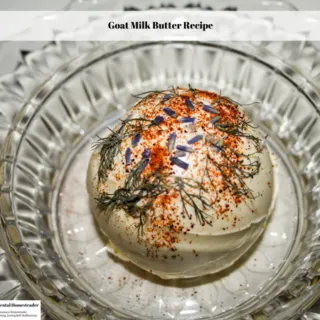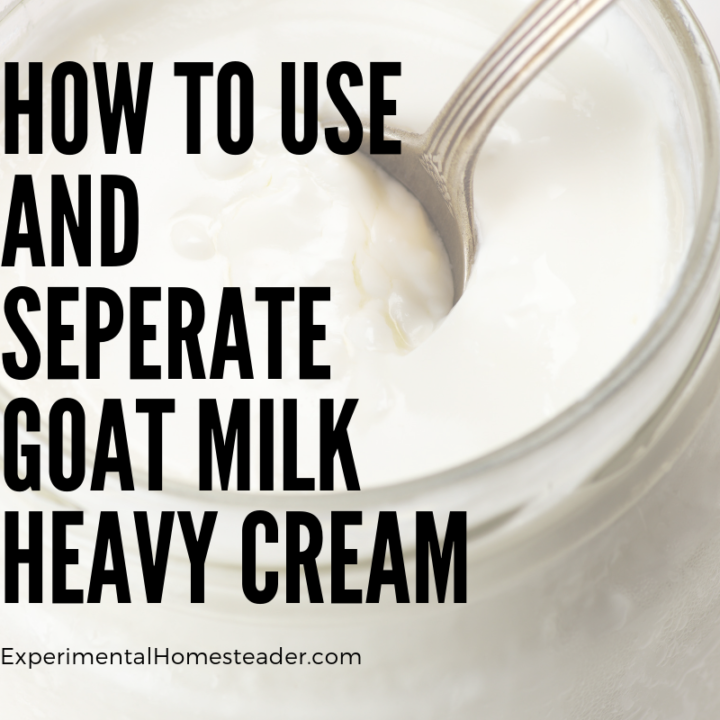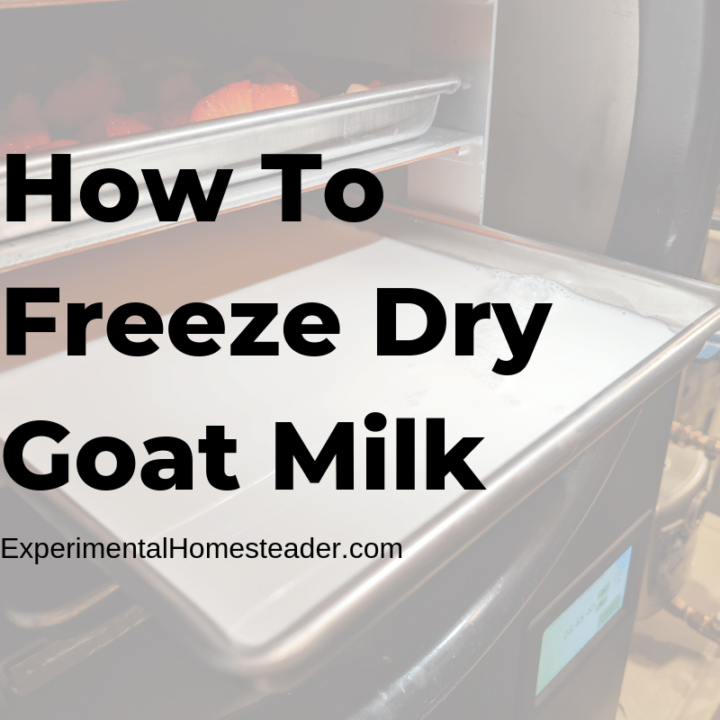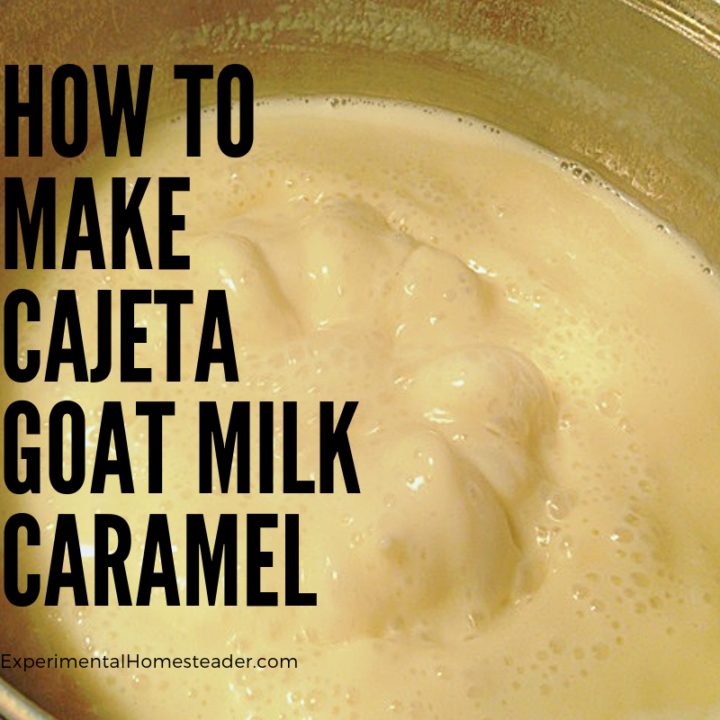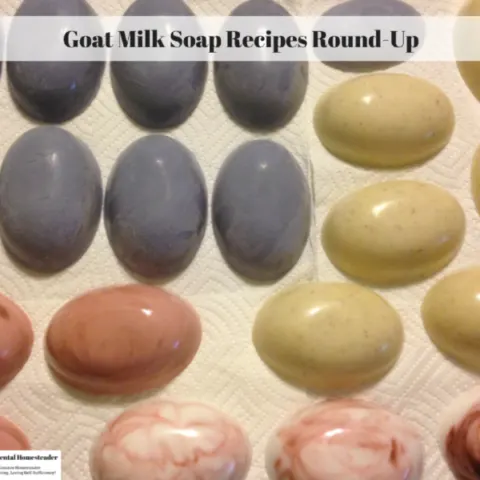Disclaimer: This is a sponsored post. I was given photos of the goat meat from Horner's Butcher Block and Cafe in Marion, Indiana. There was no monetary compensation. All opinions are my own.
Freezing goats meat is an easy - and quite common way to preserve it until you are ready to eat it, especially for those who do not can.
Just like with any of type of meat, there are certain safety issues to keep in mind when it comes to how to handle the meat, how to thaw the meat, how to cook the meat and of course, storage times.
Before I share all that information with you, here are a few quick facts to know about goats and the meat they produce.
From Goat To Freezer Meat
Boer Goats are the most common type of meat goat raised here in the United States, however they are not the only type of goat that it is safe to eat meat from.
Any type of goat does produce meat, however the amount that you get when you butcher the goat varies considerably.
For those who are unfamiliar with butchering at home, there are many butchers who do butcher goats for individual people.
Typically they want the goat brought to them alive and they take care of everything else - from killing the goat, to preparing the cuts of meat and packaging it according to your specifications.
I actually created a beginner's Homesteading eCourse because there is just so I wanted to share with you!
Selecting Goat Meat
Goat meat is no different than any other type of meat except it is not always easily accessible at the grocery store.
This depends on where you live.
Raising your own goats - or buying goats that are ready to butcher from someone who does raise them is often the only way to get goat meat in some places.
For those located here in Marion, Indiana or in the general vicinity, Horner's Butcher Block and Cafe does carry goat meat.
Goat meat, known as Chevon, is considered red meat.
Typically Chevon is light pink to bright red with well-distributed white fat throughout the fine-grained flesh.
Of course, just like with any other type of meat, there is a color variation between breeds as well as between male and female meat.
Once you have selected the goat meat you want from the store or picked it up from the butcher, take it right home and refrigerate or freeze it immediately.
The ideal refrigerator temperature is 40 degrees Fahrenheit or lower and a freezer should always be 0 degrees Fahrenheit or lower.
Storage Time For Fresh And Frozen Chevon
Raw Chevon that is ground needs used up within two days of being refrigerated.
Whole cuts of meat last for three to five days in the refrigerator.
Chevon that is not going to be used that quickly needs to be frozen.
It is ok to freeze goat meat in the packaging it came in as long as you intend to use it within the next two months.
For meat that is going to be frozen longer - and did not come wrapped in freezer paper - it is best to overwrap the packages with freezer paper or place the packages in freezer bags.
Be sure to label the cuts of meat so you know what is inside each package.
While it is true that frozen goat meat remains safe indefinitely according to the USDA Guidelines as of 2013 as long as it is kept continuously frozen, the quality of the meat does degrade some.
For the best quality Chevon, follow these guidelines:
- Consume ground or cubed Chevon with four months of being frozen.
- Ground meat within three to four months of being frozen.
- Larger cuts of meat such as steaks, loins, chops or legs within six to nine months of being frozen.
Thawing Frozen Goats Meat
Just like other types of meat, there are three ways that is it recommended to thaw Chevon:
- In the refrigerator. Thawing in the refrigerator is best. While this does take longer, it is the safer way to thaw meat. Depending on how large the package of meat is, this can take anywhere from 24 hours to a couple days. Be sure to put the meat into a leakproof bag so you do not have a mess in your refrigerator when it does thaw.
- In cold water. Do not remove the packaging, but do make sure it is airtight so water does not come into contact with the meat. Place the meat in its original packaging inside an airtight bag if you are unsure if the packaging it is in is leakproof. Submerge the package under cold water. Drain and replace the water every 30 minutes until the meat is thawed. Cook immediately.
- In the microwave. Use the microwave defrost setting and cook it immediately once it is thawed. Keep in mind that the microwave does heat up the food and that some cooking might have taken place.
Above all - never refrigerate or re-freeze meat thawed in cold water or in the microwave.
Always cook it immediately.
The reason for this is because this meat has been held at temperatures above 40 degrees Fahrenheit which allows bacteria to multiply rapidly.
Safe Cooking Temperatures For Chevron
There are many recipes for goat meat, the most important thing to keep in mind is what the internal temperature of the meat needs to be before consuming it.
I highly recommend using a food grade meat thermometer to test the internal temperature.
Here is what the internal temperatures need to be.
- Ground Goat Meat - 160 degrees Fahrenheit
- Goat beef steaks, chops and roasts - minimum 145 degrees Fahrenheit. Be sure to allow the meat to roast for at least three minutes (I prefer ten minutes) before carving or consuming.
Goat Milk And Goat Meat
Recipes, DIY and more! All related to goat milk and goat meat.
Goat Milk Butter Recipe
Making butter from goats milk is super easy and all you need is a kitchen blender! This goat milk butter recipe only takes a few minutes to make!
How To Pasteurize Goat Milk At Home
It's easy to learn how to pasteurize goat milk at home regardless of the actual method you choose to use to accomplish the task.
How Long Does Pasteurized Goat Milk Last
Have you ever wondered how long does pasteurized goat milk last? Find out the the answers for both refrigeratored and frozen goat milk!
How To Use And Separate Goat Milk Heavy Cream
Learn how to use and separate goat milk heavy cream even if you do not have a cream separator. Heavy cream is used in a lot of recipes and can be frozen.
Goat Milk Storage Ideas
Are you looking for goat milk storage ideas? Then read on to learn the best practices for handling goat milk plus short and long term storage methods.
How To Start Freezing Goat Milk
Freezing goat milk is the best way to preserve it. Learn how long frozen goat milk lasts in the freezer, how long it lasts in the refrigerator and more!
How To Make Cajeta Goat Milk Caramel
Learn how easy it is to make cajeta goat milk caramel from fresh goat milk. Plus learn how to preserve it for winter use by canning it.
Easy Homemade Parmesan Cheese Recipe
Follow these easy step by step instructions to learn how to make this easy homemade parmesan cheese recipe right in your own kitchen!
How to Make Goat Milk Cottage Cheese on Your Homestead
Learn how to easily make delicious cottage cheese using goat milk on your homestead. A step-by-step guide for beginners!
Goat Milk Soap Recipes Round-Up
Are you looking for goat milk soap recipes? Look no further! Here you find a goat milk soap recipe for liquid soap, bar soap and even laundry soap.




